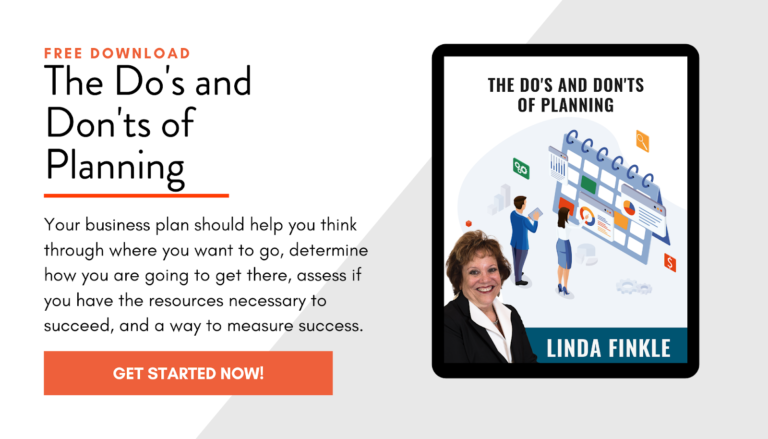Mastering Business Planning and Productivity:
Reduce Your Stress, Be Productive and Stay Focused.
Why are business planning and productivity such hot topics? And how are they interconnected?
Both are key to your success, and it all starts with having goals and a plan, as a way to help you focus on what needs to be done to achieve them. This in turn gives you the areas where you will want to concentrate your talents and abilities in order to yield the highest payoff. At the same time, it has to be fun, interesting, and feed your needs.
This is the key to maximizing your business planning and productivity and is essential to success in achieving the goals you’ve set.
Mark McCormack, the founder of the International Management Group, shares a goal-setting study conducted on Harvard MBAs in his book, “What They Don’t Teach You at Harvard Business School.”,
The study found that there is a relationship between goal setting and success. Their findings show that 14% of the people who have goals are 10 times more successful than those who do not have goals. That’s an amazing statistic.
Here’s some more statistics about goal setting that may surprise you:
- In the Annual Staples National Small Business Survey more than 80% of small business owners don’t keep track of business goals.
- 40% of people that write down goals neglect to routinely check their progress and make sure they are on track to achieving them.
- People who set goals experience higher motivation, self-esteem, self-confidence, and autonomy according to Positive Psychology
On this resource page, we’ll cover the key 5 areas of business planning and productivity that you need to focus on for success.
This resource page has been created to provide you with help in improving your business planning and productivity.
Or if you never have done any business planning and productivity activities, it will give you the tools to get started. It provides examples of the type of goals you may want to create, and ideas on how to measure progress.
We’ll help you understand the distinction between being busy and being productive. We all want to get more done and time management is a hot topic, yet we can’t really manage time, so what are our options?
We have divided the resource page into five sections, each building on the section before. You’ll find tools, ideas, and help throughout each section. Read the articles and take advantage of the resources we provide. From The Dos and Don’ts of Planning to Succession Planning and everything in between, there is a resource you shouldn’t ignore.
Start with the section on Goal Setting. We begin the discussion with goals. Are they important? What are they? How do you create them? And so much more.
Let’s dive in.

Why is it important to set business goals and part of your overall business planning and productivity strategy?
Goals are powerful tools. They can help you to focus your attention on achieving desirable outcomes.
"Setting goals is the first step in turning the invisible into the visible."
- Tony Robbins
Let me give you an example: In most businesses, one of the most desirable goals is to be profitable. However, profitability does not happen without making sales and managing expenses. But how do you ensure you make sales and know if you are managing expenses properly? You have to set goals for each of these areas, that’s how.
In this article I point out that effective goal setting isn’t just about listing the things that need to be done. It’s actually more about delegating minor tasks and concentrating on those that are vital to your goals.
In general, employees want to know what you expect of them, what you want them to accomplish, and creating goals will provide that direction. Setting goals and communicating them helps point your team’s brainpower towards success and accomplishment, and in finding solutions when necessary. Setting sales goals is a great first step towards achieving the sales success you want. The same is true with understanding and managing expenses, and all other aspects of the business.
Whether your business goals and plans are created at a company level or at any level below they provide needed motivation. As a rule of thumb…your goals and plans to achieve them should be specific, measurable, achievable, and timely.
All businesses, regardless of their size and market should have goals.
It’s critical to have them as a way to ensure that you are able to achieve your personal business plan and productivity goals.
This sounds obvious enough, but often people don’t take the time to focus on organizational goal setting. They simply go about selling their products or services, chasing every customer that shows the slightest interest without any clear direction of where they should actually go.
Creating goals takes time and a bit of introspection. In this article, I share a simple 4 step process that will help you get started with organizational goal setting.
Setting SMART goals is an effective way to approach goal setting.
They help you clarify your ideas, focus your efforts, use your time and resources productively, and increase your chances of achieving what you want in life. SMART is an acronym, which stands for Specific, Measurable, Achievable, Relevant, and Timely, and it helps in keeping things realistic and objective.
Creating goals using the SMART goal idea will ensure that you are actually creating a goal, rather than an action item. It will help you determine if it is realistic, do you have the resources to accomplish it in the time frame you have outlined?
A goal is not a goal unless it includes a by when time frame that can be as broad as ‘by the end of the year or quarter’ or as narrow as ‘by February 15th’.
How do I stay on course with my goals after I’ve created them?
I am told all the time from clients that they either set goals and don’t stick to them, or decide since they don’t stick to them to just not bother. However, statistics show that those who set goals and write them down are more likely to achieve them.
Psychologist Gail Matthews did a study back in 2015 where people wrote down their goals. As a result, they were 33 percent more successful in achieving them than those who did not write them down. The small step of writing them down increased success by a huge percentage.
Setting goals is easy, sticking to them is more difficult but it doesn’t have to be. If you want something to happen it takes thought and focus, and resilience especially when life throws you a curveball.
What’s the secret to setting goals and sticking to them then? In this article, I share my secrets to setting goals and sticking to them. From personal experience and working with executives, I’d say that the number one thing you must have is the motivation behind the goal. Why are you creating this goal? What makes it important to you?
It’s one thing to create goals for yourself but how about goal setting with your team?
Many times it takes a team effort to achieve those goals and the key to achieving them is to first get everyone to understand and appreciate their role in making it happen.
There are 5 keys to encourage and keep your team working towards their collective goals. The key to this is to make sure you, as the leader, are seen by your team as someone who sets goals and follows through…no matter what.
What can get in the way of goal setting?
As I’ve mentioned before, there are numerous studies on the correlation between goal setting and success. If you don’t set goals, you are less likely to be successful with your business planning and productivity. Yet so many people don’t set goals.
Why not?
The most common reasons people don’t set goals include:
- A lack of belief. You don’t believe that you could achieve significantly more than you are currently achieving just by setting goals.
- Setting the wrong goals. You didn’t have success in the past when you set goals. So why bother? But perhaps you created the wrong goals, or ones you thought you should have instead of those that motivated you.
- Allowing negative thinking to get in the way. You have a failure even though you planned and got input when creating your goals. As a result you think how could I trust myself to ever make a decision or set a goal that would be successful?
- Fear of trying something new. Maybe you don’t know what to change, or how to chart a new path. Fear propels people into inaction. As a result, you just take the most comfortable route and keep on doing the same old things that you’ve always done.
- A lack of proper motivation. Setting goals and achieving them requires energy. This requires motivation and without that...you’re not going to take a single step towards your goals.
- You want instant gratification. We live in a culture of wanting things now. Goal setting requires that you focus on the future and it often takes an extended time period to achieve them.
- You’re comparing yourself to others when goal setting. Instead, you should choose the ones that matter to you, not the ones you think should be important or by comparing yourself to others.
Try to avoid these common mistakes when setting goals:
- Adopting other people’s goals. Make sure your goals are truly yours and not someone else’s or the likelihood that you will accomplish it diminishes significantly.
- Not placing enough value on the process and focusing too much on the result. Be okay with achieving a positive result even if you fall short of your original goal.
- Not changing your thinking. What shifts in your thinking do you need to make in order to achieve your goal?
- Forgetting to include resources. Before committing to a goal make sure you know the resources you need, and if they are available to you.
- Neglecting to include milestones.Your milestones provide an opportunity for you to examine what’s working, what’s not and if necessary to make adjustments.
- Not writing them down. Writing your goals down helps lodge them in your long-term memory, not short-term memory, which enables your mind to not only keep track but organize in a way that improves results.
- Not sharing your goals. Doing this helps to keep you accountable.
- Forgetting to celebrate. Make this part of your goal. Too many of us focus on what hasn’t been done or what isn’t working instead of the success we’ve achieved, no matter how small.
Lastly, here are a few tips to help you set goals that are realistic and won’t leave you feeling deflated and frustrated. Try to think of your present goals as your future accomplishments.
The importance of setting the right goals cannot be emphasized enough. There is a thin line between realistic and delusional so make sure yours are realistic.
It takes more than a wish and a prayer to reach your goals.
Dreaming about what you want to accomplish, with your business planning and productivity isn’t going to get you to where you want to be.
Though wouldn’t that be nice?
In order to achieve your goals you have to determine what they are specifically, assess what you need in order to achieve them, plan the steps, measure along the way and celebrate at each step. Doing all that takes thought and an investment of time.
While we can’t create the goals for you, we can help you determine what they should be and how to develop them. And along with the goals we will show you how to create milestones for progress and so much more.
Click the image below to download The Guide to Creating Goals and Milestones.

Once you have your goals in place, planning helps you to chart a course for the achievement of your goals.
Your business planning should be a formal statement of a set of business goals, reasons why they are believed to be attainable, and how you plan on reaching those goals. In addition, it should contain background information about the organization or team attempting to reach those goals.
In this article, I share the two types of business plans, why you need one or both of them, and how you can benefit from creating one.
The first is one that you would prepare for a lender if you are starting a business or need cash for expansion or growth. The second type is what I refer to as an operational business plan.
Why do you need a plan?
In this article on planning, I point out that planning is about the process, the act of thinking about your department or company, and your goals, and how you’re going to get there. It’s way more than simply creating the document. You’ll find as you go along that each year your plan will be more useful as a tool to assist with making business decisions based on information and facts.
Planning involves envisioning the results you want to achieve, and determining the steps necessary to arrive at the intended destination – success, whether measured in financial terms or any other way.
In today’s workplace, leaders must be able to build for a future that cannot be predicted, estimated, or forecast. In other words, “You’ve got to think about big things while you’re doing small things so that all the small things go in the right direction”. [Alvin Toffler].
This is where you as a leader must create a plan that prepares your organization for- ‘what happens if…’
As we all know the world is unpredictable…and as a leader, you must routinely and regularly review the business planning and productivity goals you’ve developed, assess where you are towards the goals, and determine what if anything has changed that requires a shift in the plan.
Sometimes having a business plan just isn’t enough. Even the best of plans, plans that consider the what-ifs and oh s___ts can at times not accomplish what you set out to do.
There are situations where you don’t know what you don’t know till you are in the thick of it. There are times where the unexpected happens. Stuff happens.
What’s most important is how you respond.
Reviewing your business planning and productivity goals are essential to staying on course and knowing when to make adjustments. Great leaders know what questions to ask when during this process. In this article, I share the 4 crucial questions to ask when you put your initial plan together and they are equally useful when you review them during the year.
You are likely to face challenges when business planning and productivity goal setting, everyone does.
In this article, I identify the 12 most common challenges people face when planning, and I’ve offered solutions and ideas on how to handle them. Changing your mindset around planning is key to most of these roadblocks that come up when sitting down to create a plan.
Here’s what you should focus on when business planning and productivity goal setting… you may be surprised that I recommend focusing on return on time versus return on investment. I give you 3 reasons why this is important.
The key to this is asking yourself the question – am I maximizing my return on time by spending my time in the best way possible? Doing this will help you make better decisions, not only for your business and planning but also for your personal life.
A problem I often see is that not every manager really understands the vast difference between a “Strategy” and a “Plan.”
Here’s a quick review of these terms in their simplest definition, which is how you should translate them to your team. Now, these aren’t just definitions, these definitions should change your plans and expectations for your company’s next “strategic planning” session.

What is time management?
It’s the process of being able to plan and organize your time. When you can do this effectively you are able to work smarter, not harder even when time is tight and you feel pressured. Doing this will help you master both your business planning and productivity goals.
There are mistakes most of us make that interferes with us being able to manage our time successfully, or at least get some level of control so we aren’t in a constant state of frenzy.
In this article, I share the 9 time management traps and how to avoid them so you can reduce your stress and the constant hounding from others that you are never available.
Why do we so often think that procrastination is a time management issue and that it is something you need to fix with better time management skills?
We all need to power through doing things we don’t want to do but need to do. What I want is for you to take a look at why you are procrastinating.
Most often, procrastination is an emotional reaction to the task at hand, not a time management issue. For some reason, you are resisting doing this activity. Understanding this, and what’s causing the resistance is the first step in moving beyond procrastination.
Managing how you use your time strategically is a big part of success.
The most successful people know that fitting everything in depends on recognizing what is important. They have developed practices and techniques they use daily to manage themselves and the activities they need to be part of.
In this article, I share the seven best practices that successful people use to get things done. I suggest that you spend time looking at the list, compare it to what you are currently doing and decide what you can do differently.
Are you still wondering if it is really possible to manage your time better than you are currently doing? There is no one right strategy and I’ve pulled my 5 best ideas to help improve your time management skills here.
If you could do two things to improve I would say it would be to start by writing a list of things you need to accomplish for the upcoming week. Then prioritize them and pick the time of the day that you are the most productive to accomplish your highest priority tasks.
Are you still looking for more time management strategies?
I’ve compiled 15 more strategies here that can help you refocus the time you have and use it more productively. If you find yourself constantly distracted check out the list in the article of what you can do next time you find yourself getting sidetracked.
It is easy to lose sight of what you need to accomplish at any time
Leaders that have the ability to keep everyone on track are highly prized. Being able to rise above unexpected situations that may otherwise sidetrack you and your team will help pave the road to success.

Imagine ending your workday satisfied, knowing that you had been productive and you were able to accomplish exactly what you set out to do. Add to that feeling that you are at the top of your creative game—getting your tasks done both efficiently and well.
It is possible to feel this way rather than ending your day dog tired and slumped behind a desk piled high with unfinished projects and/or a never-ending to-do list.
There’s almost a status attached to being busy. It makes us feel important. Whether we say it out loud or even to ourselves being busy means we are important to lots of people, for lots of things.
Instead, take a break and stop being so busy. Studies show that performance and productivity decrease when people haven’t had enough rest and are depleted.
The other thing to consider is that there’s an unspoken belief that if you could just plan your schedule better you could reach productivity heaven.
That belief is in itself the problem. We cannot, nor should we strive for improved productivity. If we spend our time focusing on what takes our attention we will realize that what’s taking our attention is often what interferes with our productivity. Productivity often isn’t about time management.
Before you spend time learning time management techniques, or how to improve your productivity, take time to assess where your time goes. For many leaders I work with it’s having repeated conversations about performance, lack of communication, misaligned expectations, staffing, and recruiting challenges…all related to communication. When you examine where your time goes and determine it’s a communication problem, check out our resource page on communication for ideas and tips on how to improve communication at all levels.
One of my favorite productivity boosters is learning to say no. It’s very easy to get in the habit of saying yes way too often and then you are overcommitted.
When we say yes and don’t keep our commitments or fail to make a deadline what happens? We feel guilty and the other party is frustrated and disappointed.
There are only so many hours in a day, a week, or a year.
Think of it this way, saying yes means you will need to say no to something else. Before you say yes, take a moment to ask yourself, does this allow me to accomplish everything else on my plate without overworking myself or not meeting a commitment I’ve already made?
Another way to boost your productivity is to work on being less of a perfectionist.
Perfectionism is the enemy of productivity because perfectionists tend to do the following things:
- Hesitate to delegate
- Rather do the work themselves
- Over deliver when it isn't’ necessary
- Redo their work more than others
- Experience higher levels of frustration, stress, anxiety and overwhelm
Once you learn to let go of these perfectionist tendencies you’ll not only be more productive, you’ll feel better.
Take a nap at work…what?!
I know it’s not socially acceptable to be napping at work, and in many companies taking a nap just may get you shown to the door. Yet there are a number of studies that all say the same thing, a lack of sleep will impact performance and a little nap can improve productivity.
Ask your boss and see if it’s possible to work a nap into your workday. I know of several companies that have quiet rooms where people can go and rest or nap. If napping at your desk isn’t an option can you find a discreet place to find 20 minutes to recharge yourself?
Finally, if you can’t squeeze a nap into your workweek then I suggest that you find a way to nap during the weekend.
I want to wrap this section on productivity with a final tip about stop feeling guilty about your to do list. I’m sure that most of you reading this have a to-do list that feels so long like there is no end in sight.
It’s easy to start feeling guilty but that won’t help you get things done. In fact, it’s likely to make the problem worse.
Instead I suggest that you do the following:
- Recognize you’re never going to complete the list. Sometimes there are outside factors that stop us from finishing everything on our lists.
- Be kind to yourself - realize that some things on the list just aren’t going to get completed.
- Celebrate your successes - focus on what you have completed not only on what’s still on your list.
- Remove anything that isn’t necessary from your list.

Why are we including this here? Because it is often overlooked until it becomes a critical issue and frankly succession planning should be a part of your business planning and productivity strategy.
Is succession planning necessary?
Succession planning should be considered for every key position within your organization.
When you know where you want to place people when the time comes, it helps you develop and build leaders and other roles you will need. It’s about how you cross-train, develop new skills in your current staff, and build bench strength within departments.
If you wait to consider succession planning when you are ready to retire, take on a new role, or when key people leave your company, it’s already too late.
Have you considered that a lack of a plan or just poor planning will wreak havoc in your organization?
Take a moment or two to consider what will happen if a key employee in a department leaves and no one is being developed to take their place. The list of possible negative impacts of poor succession planning is long.
Succession planning doesn’t have to be a big project that consumes all your time and resources. And smart succession planning is critical for any business.
Proper succession planning is the key to molding the next generation of leaders in any organization and provides a path towards continuity and success.
How can Succession Planning Help?
When you have succession planning in place, you have a plan to help you continuously develop effective leaders, who continue; if not improve, the legacy of their predecessor. If you want your company to grow and thrive for the years to come, then you should create a solid succession plan.
Remember though, succession planning is more than who will take over key leadership roles. There are positions within every company that will need someone else to take over at some point. Is there only one person who knows how to handle payroll? Or the IT guy who knows everything, but no one else does?
One of the most important pieces for a succession plan to work is having a mentoring program to groom those with potential for top positions and also ensure that the best candidates rise to the top of the list.
Top executives must create a sustainable, viable succession planning system that gives employees a clear path and knowledge of what is expected of them.
And don’t forget, a good succession planning program is a great retention tool because it sets realistic expectations and goals for the best and the brightest.
Often overlooked is succession planning in a family-owned business. In this article, I share the secret sauce to creating a solid plan.
With the proper family business succession planning, your company’s life may be extended to last through several generations. Don’t lose your legacy because you haven’t thought about your options. Implementing the steps I outlined will preserve the legacy of your family business.
How do you handle succession planning in an emergency situation?
Unfortunately, so many companies overlook this until it is too late. If you find yourself in this situation, I’ve compiled an emergency succession plan in this article.
The bottom line is this… You want a succession plan in place to make sure you always have the right leaders in place should an unexpected change happen.
When you fail to create an orderly plan for succession, your company may not get a second chance if it doesn’t adapt immediately after a key player leaves the company or passes away.





